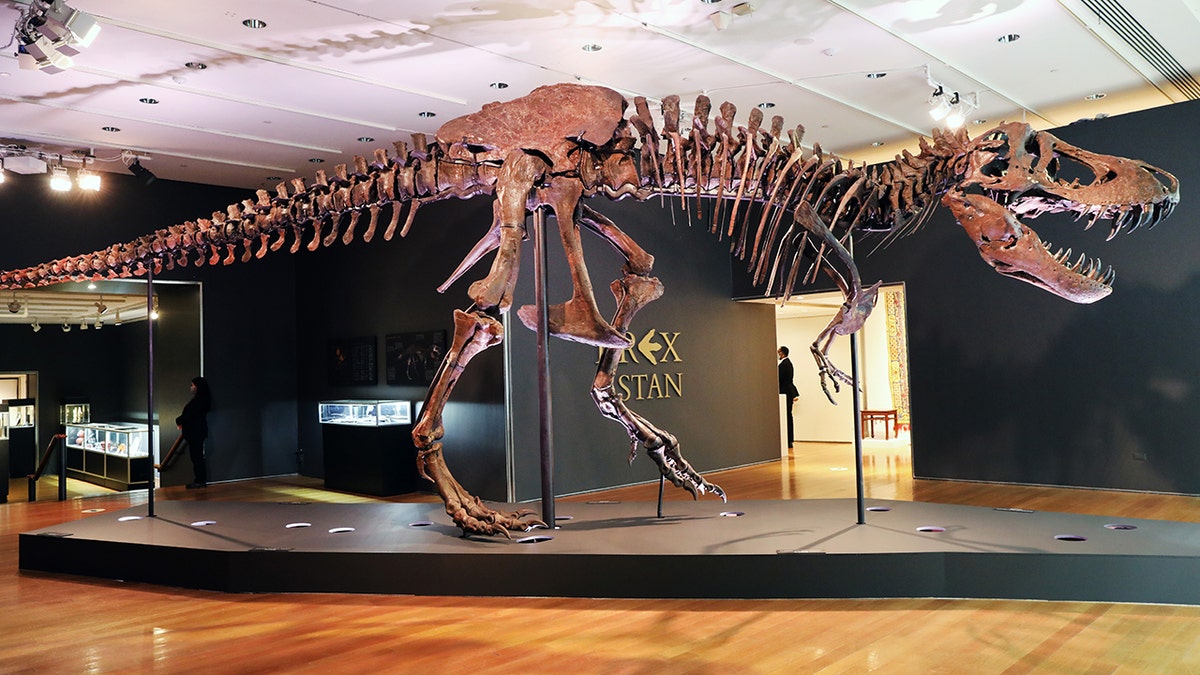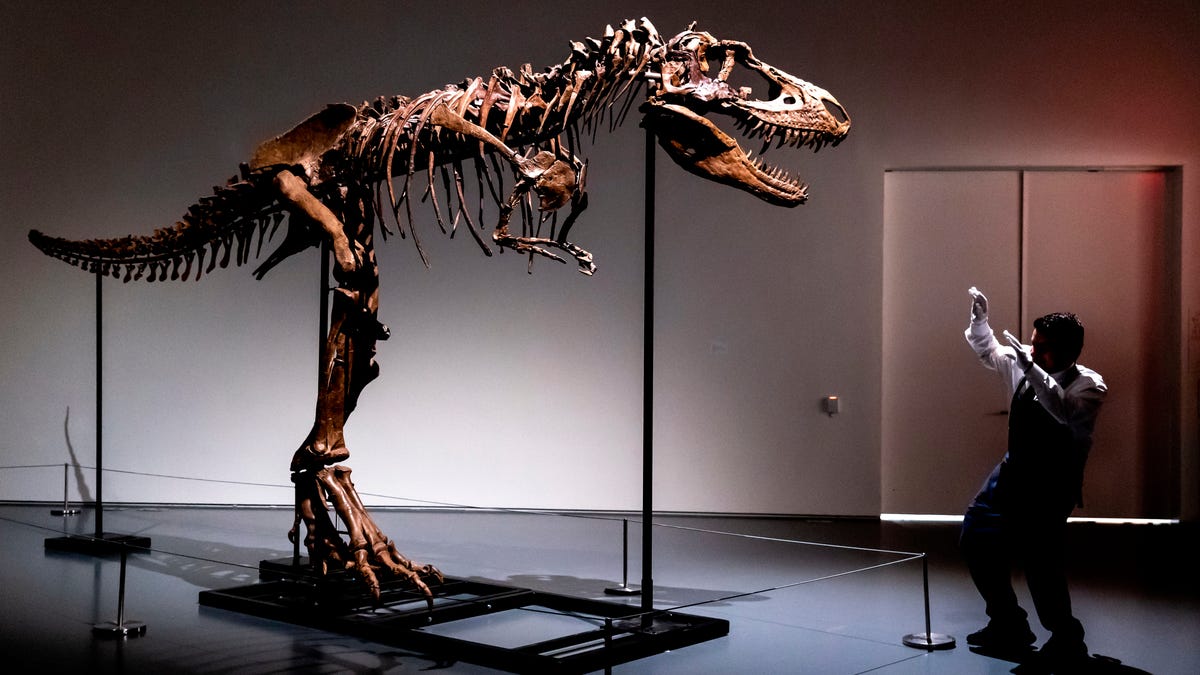NASA DART mission to test-crash spacecraft into asteroid
The Ordinary Spaceman author Clayton Anderson explains how the DART Mission could protect our planet from cosmic forces in the future.
A new study looking into what might have killed off dinosaurs determined that it is likely the ancient species were done in by a mighty cloud of dust.
A massive plume of fine-grained dust may have lingered in Earth's atmosphere for 15 years, cooled the temperature by 24 degrees and shut down photosynthesis for two years, according to the results of a study published in Natural Geoscience.
According to the study, scientists researching the sediment layers of the Tanis paleontology site, a heavily studied region of North Dakota that has preserved evidence of the asteroid impact thought to have killed off dinosaurs, discovered new insight into the catastrophic impact.
EARLY MAMMALS MAY HAVE HUNTED DINOSAURS, RARE CHINA FOSSIL SUGGESTS

A Tyrannosaurus rex dinosaur fossil skeleton is displayed in a gallery at Christie’s auction house. (Spencer Platt/Getty Images)
In a Washington Post report that described the aftermath of the impact as an "apocalyptic dust plume," planetary scientist Cem Berk Senel explained that the impact of the asteroid led to a chain of events that ultimately caused the demise of dinosaurs.
"Dust could shut down photosynthesis for such a long time that it could pose severe challenges," Senel, who works at the Royal Observatory of Belgium and led the study, told the Washington Post. "It could result in a chain reaction of extinction to all species in the food chain."
Scientists have long attempted to model the aftermath of the asteroid impact in the Gulf of Mexico millions of years ago, with most agreeing that the impact triggered the mass extinction of nearly three-quarters of all species living on Earth at the time. Some researchers have theorized that the asteroid impact kicked up a giant cloud that starved plants of sunlight, led to large global wildfires and resulted in sulfur aerosols being released into the atmosphere.

Illustration of asteroid impact that led to the demise of the dinosaurs. (Esteban De Armas/Shutterstock)
However, questions remained about just how long the sun was blocked and how a prolonged period of darkness caused apocalyptic damage and shaped a new age of evolution on Earth.
Pairing a computer simulation with an analysis of sediment layers of the North Dakota site, researchers discovered that the fine dust grains that became part of the dust plume could have persisted in the atmosphere for over a decade. The researchers argued that those particles, which were about the same size as microscopic bacteria, would have made a larger contribution to blocking sunlight than soot particles or sulfur aerosols.
"The duration of darkness is really important, because if, in fact, photosynthesis was shut down, and that drove extinctions, it has to be dark for a fairly substantial length of time," David Kring, a planetary scientist who was not involved in the study, told the Washington Post.

A Sothebys New York employee demonstrates the size of a Gorgosaurus dinosaur skeleton, the first to be offered at auction. (AP Photo/Julia Nikhinson)
CLICK HERE TO GET THE FOX NEWS APP
However, Kring also cautioned that the asteroid impact had wide-ranging environmental consequences, making it difficult to assign just one cause to the mass extinction that followed.
"Each of those environmental consequences affected different parts of the world and lasted for different amounts of time," Kring explained. "So one of the things that we understand in general, and not yet in detail, is that it’s really this potpourri of environmental effects that led to the extinctions. There’s no single silver bullet."

